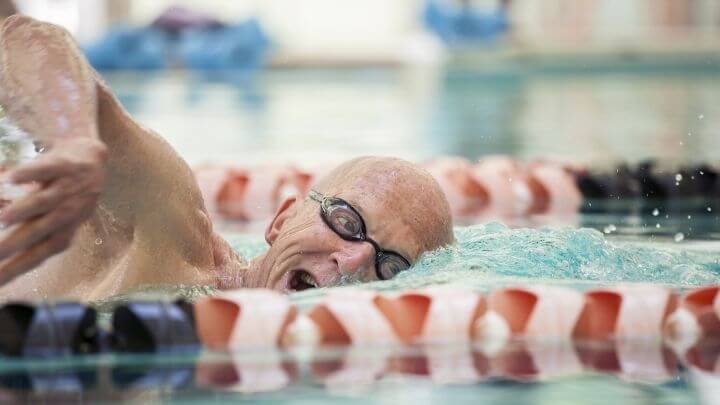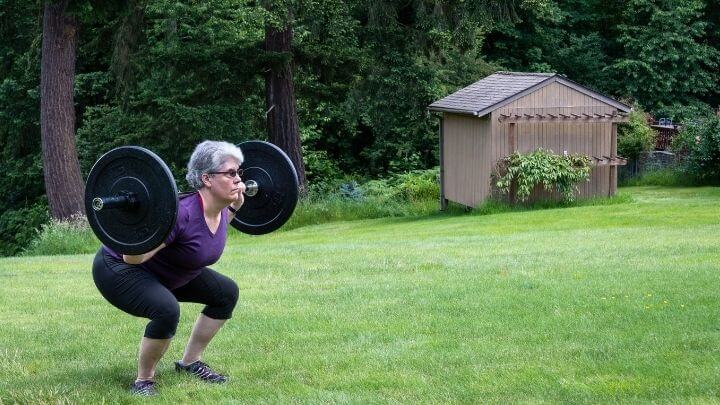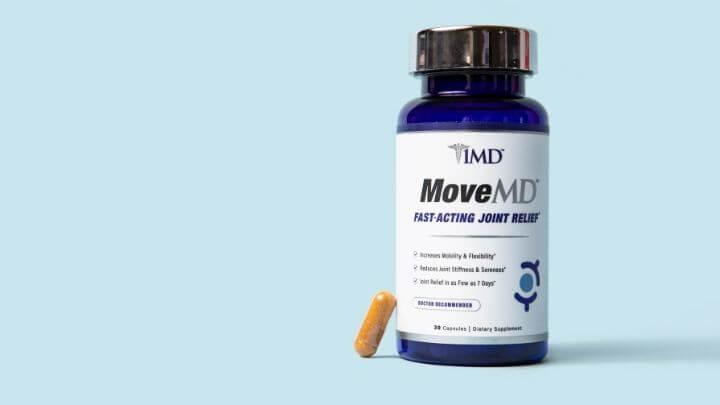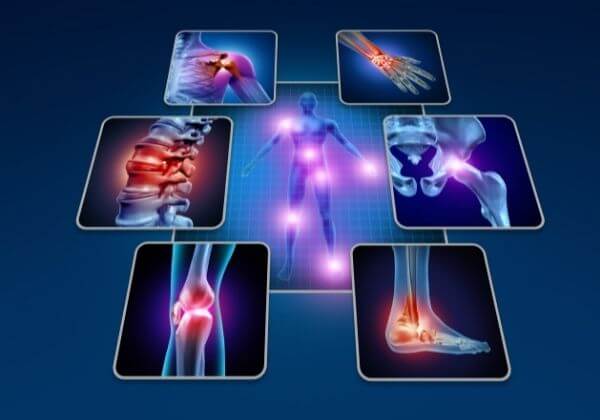The CDC (Centers for Disease Control & Prevention) estimates that one in four adults in the United States has some type of joint condition. Occasional joint discomfort can interfere with daily living, and for many, physical activity is a painful subject. But, it doesn’t have to be this way. With a holistic approach to joint care, you can incorporate regular exercise, balanced nutrition, and targeted dietary supplements into your life, so you can keep moving.
Only about one-third of American adults get the exercise they need, and there is a link between lack of exercise and joint discomfort. A lack of exercise may weaken muscles and bones, which increases the stress placed on your joints. While many believe that exercise can worsen joint discomfort, research has shown that it can benefit joint health and restore mobility when done properly and safely.
Regular physical activity promotes balance by maintaining strong muscles, helps support healthy bone density, and can help manage joint stiffness and discomfort. Regular activity also replenishes lubrication to the cartilage of the joint, which can help promote flexibility. Staying active is a great way to maintain a healthy weight, reducing pressure and occasional oxidative stress on the joints.
Get Moving for Joint Health
A 2019 study showed that exercise helps prevent cartilage breakdown caused by natural joint aging and wear. Regular physical activity as part of a healthy lifestyle can support joint health, flexibility, mobility, and quality of life. Professionals recommend getting at least 150 minutes of exercise a week, but check with your doctor or physical therapist before starting a new exercise regimen.
When it comes to exercising for joint health, it is important to remember to stay within your limits. You do not want to increase discomfort or cause injury. Exercise for joints initially should be gentle, allowing you to gradually strengthen bones and muscles. The best exercises to do this are swimming, cycling, walking, strength training, yoga, or Pilates.
1. Swimming
Swimming and water exercises can help reduce everyday discomfort, swelling, and occasional oxidative stress on the joints since water supports the body’s full weight. Water also offers 12 times the resistance of air, which means water workouts can effectively help you build muscle and strength while improving balance and range of motion without the need for heavyweight resistance on your joints. Swimming regularly will help support a healthy weight, which helps reduce pressure and stress on your joints.

There are various aquatic exercise options depending on your fitness and mobility levels. For example, you can swim laps, join a water aerobics class, or join water fitness programs designed especially for people with joint discomfort. If possible, look for heated pools with a water temperature between 82 and 88 degrees Fahrenheit because warmer temperatures may help soothe the joints as you exercise.
2. Cycling
Cycling is low-impact, which means there’s limited stress placed on your weight-bearing joints (hips, knees, and feet). You can choose to ride a bike through the city or country or use a stationary bike at home or the gym. The movement is the same, and it helps support joint function and overall health in several ways.
As your weight-bearing joints move, they become more lubricated with joint synovial fluid, which helps to reduce stiffness. Cycling improves range of motion in the hip and knee joints while surrounding muscles are strengthened to further support and stabilize those joints. Cycling can also help with weight management to reduce excess pressure on joints.
Some tips for adding an effective and safe cycling routine to your day:
♦ Always start with gentle movements to warm up.
♦ After a few stretches, start with a short ride. Ten minutes at low resistance is perfect for your first week of activity.
♦ As your joints become less stiff and muscles strengthen, you can increase time and eventually resistance.
♦ Work your way up to 150 minutes of moderately intense aerobic exercise per week. You can split that time into 10-minute blocks if that’s easier on your joints.
3. Walking
Walking is an easy, low-impact aerobic exercise to support joint health that nearly anyone can do regardless of fitness level. It can also be done at any time of day, fitting easily into even the most hectic schedules. Walking strengthens your bones and muscles, increases your range of motion, and shifts pressure and weight from joints and muscles to reduce discomfort.
Outdoor walking engages more muscles, which increases blood flow to joints and other tissues, but if this is not available, a treadmill will still exercise your joints effectively. As with any exercise routine, it is important to start slowly. You might do five minutes a day the first week and then increase your time or distance a few minutes the next week. You can also speak with your doctor or a physical therapist to help structure a program that’s right for you.

4. Strength Training
In a review of 8 studies that included older adults with daily joint discomfort, researchers found that strength training programs reduced discomfort by 35% and increased strength and function by 33%, compared to the control groups. Strength training can also help manage weight, which can greatly improve your symptoms in weight-bearing joints like your hips, knees, or ankles.
To get the most benefit from strength training, aim to do it 2 to 3 times a week for 30 minutes. You’ll want to include exercises for all major muscle groups, not just the muscles surrounding the affected joints. Always warm up first with gentle stretches and finish every session with a cool-down and stretching. You also don’t need to join a gym with weight machines because you can do these exercises at home using barbells, resistance bands, or body weight.
Some of the best exercises include:
♦ Squats to strengthen knee joints
♦ Seated leg raises for hip joints
♦ Shoulder presses for shoulder joints
♦ Ankle rotations for ankle joints
5. Yoga/Pilates
Yoga and pilates are low-impact exercises that can help you build strength, support healthy joint function, improve balance, reduce joint swelling, and minimize discomfort.
Yoga can be used to help improve flexibility of the body and affected joints. Pilates focuses on strengthening muscles and relaxing tension in the body. Both activities are great for strengthening all of the muscles, but you should find a qualified instructor who can show you a gentle routine.
It is important to practice poses and stretches that protect your joints while improving your strength and flexibility. A guided training program will also help you avoid improper form and avoid potentially harmful poses that require you to balance on one foot or bend joints more than 90 degrees. Some of the most beneficial poses for joint health include:
♦ Cat/Cow pose for your spine
♦ Supine twists for your hips
♦ Downward facing dog for your hips
♦ Warrior pose for your knees
♦ Cross-body shoulder stretch for your shoulder
Promoting Joint Health From Within
When regular exercise is added to a healthy routine, the benefits for your joints will be even greater. A holistic approach to joint health, including balanced nutrition and dietary supplement support, is the best way to nourish, protect, and strengthen your joints.

This is the approach that 1MD takes when it comes to your health. MoveMD® is a comprehensive, fast-acting solution to support your joints. When combined with a balanced diet and an active lifestyle, the naturally sourced ingredients of MoveMD® help promote proper joint mobility and flexibility.
♦ AprèsFlex® Boswellia Serrata, a patented and bio-enhanced form of boswellic acid clinically shown to boost joint health and aid joint discomfort
♦ Zanthin® Natural Astaxanthin, a patented antioxidant clinically shown in a pilot study to decrease oxidative stress.
♦ Type X.I.V. Eggshell Membrane Collagen and Type II Chicken Collagen contain joint compounds and proteins essential for maintaining healthy joint and connective tissues.*
♦ Hyaluronic Acid helps maintain healthy viscosity of joint synovial fluid for targeted joint mobility and flexibility support.
Final Thoughts
Exercise is an important component of healthy living. Combined with a nutrient-rich diet, low-impact activities can help support your joints and promote flexibility and mobility. Make sure you consult with your doctor before adding an exercise routine to your life to ensure you only do safe activities to protect your joints.
Joint discomfort and various forms of daily wear created by oxidative stress can make everyday activities challenging, even getting out of bed. With a holistic care program consisting of daily fitness and a fast-acting supplement like MoveMD®, you can wake up each morning and hit the ground running.
Dr. Adam Kreitenberg

Dr. Adam Kreitenberg is dual board-certified in both rheumatology and internal medicine. He completed his internal medicine internship, residency, and rheumatology fellowship at the University of Southern California and Los Angeles County Medical Center.






